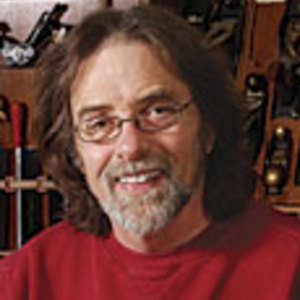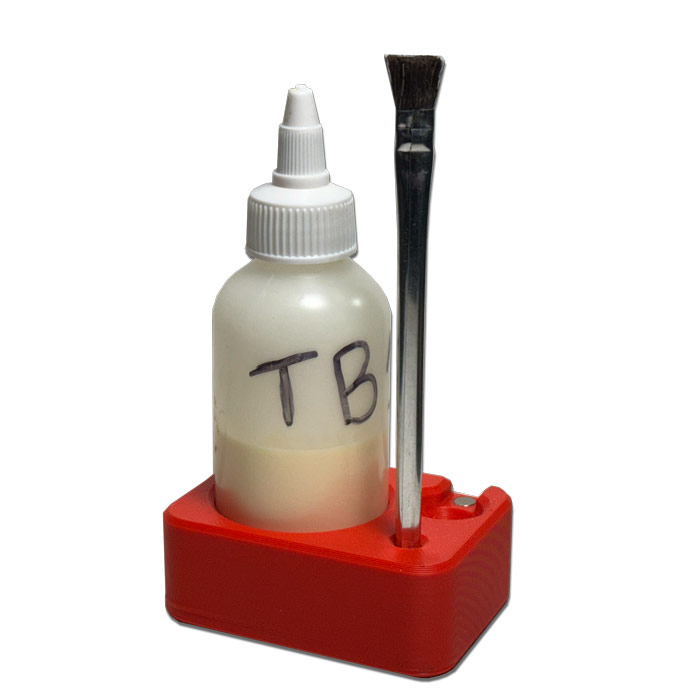Do you put glue on one surface or two?
Bob Van Dyke and Mike Pekovich answer the age old question, and disagree
Question from Matt: I see many of the world’s best woodworkers only apply glue to one mating surface of a joint, not both, as advocated by Bruce Hoadley. When is it acceptable to apply glue to one surface of a mating joint?
“Double spreading, or applying adhesive to each of the mating surfaces,
is recommended where feasible. This ensures full wetting of both
surfaces, without relying on pressure and flatness to transfer the
glue and wet the opposite surface. With double spreading, a greater
amount of glue per glue line is necessary, perhaps a third more.”
-Bruce Hoadley–Issue #7–Summer 1977

Mike : The difference between glue on one surface versus two surfaces for me has to do with whether it’s a type of joint that can be clamped together in such a way that you’re increasing the amount of pressure on the glue surfaces. That sounds somewhat obvious, but if you think of a panel glue-up, edge to edge, the more clamps you put on–or the more you tighten them–the more pressure you’re putting on that joint. The other type of joint would be like a mortise-and-tenon joint. You can clamp that together, but all you’re doing is keeping that shoulder seated to the opposing piece. You’re not adding clamping pressure to the mortise and tenon, you’re relying on the fit of the joint. So whenever I can’t get the two joints to come together with a clamp, like a mortise-and-tenon joint, I will glue both faces.
When I can get some clamping pressure on there, like a panel glue-up, there are two problems with putting glue on both edges. You have a certain amount of working time with the glue before it starts to skin over and compromise the glue joint. So first, if I’m gluing both surfaces, I’m going to tend to put a thinner coat of glue on each surface, and the thinner coat is going to have a chance to skin over a little bit faster than a thicker coat. Second, I’m applying glue to twice as many surfaces so it takes me twice as long to apply that glue, which leads to the same problem. If I put one heavier coat on a single face of that glue-up, I can do it twice as fast, and that heavier coat is not going to skin up as fast as a thinner coat. So, in a nutshell, I do one surface on these kinds of joints because it’s a lot faster, and that has its own benefits.

Bob: What Mike said makes total sense, especially the skinning over thing. If I’m doing an edge joint on a panel, I will put a bead of glue down both edges, down the middle. While it’s still a bead I have more time, because there’s not as much surface area for the air to get to. After all the glue beads are on, I take my finger and I quickly spread out the beads and distribute the glue evenly over both surfaces. And now I don’t have a lot of time, because I have a thin layer of glue like Mike was talking about, but all I have to do is put the boards together. There’s no more glue to apply. So that’s how I handle the timing thing.
As far as whether to put glue on one edge or two: I used to only put glue on one edge, because I thought, “Yeah, you put it on one edge, you put the two together, you squish them together, now you’ve got it on both edges. Aren’t I smart.” Then I took one apart once, after about four or five minutes when it hadn’t set up yet. I popped it apart, I don’t remember why, and there were all of these holidays: dry spots on the side that I hadn’t applied glue to directly, where the glue didn’t squish on like I had been telling students all these years that it was going to. But it didn’t do that, and now I understand why you’re supposed to put it on both. A thin layer on both gets you to no question about it, rather than leaving you wondering how many little dry spots are in there. You’ll never know until the joint fails. It probably won’t fail, because a good glue joint is stronger than the wood itself, so you can get a little holiday here and there’s and it’s probably not going to be a big deal. But I’d still rather be safe than sorry.
Mike: I don’t question Bob’s technique, and I have no arguments against it whatsoever. But I’m still gluing just one edge–for now.
Bob: Yeah, I did it that way for years and years and years and it was just a couple of years ago, when I had that experience, that I changed my technique a little bit. It’s a minor detail, you know. It’s not the difference between make or break.
This is conversation was excerpted from Shop Talk Live episode 178.
Fine Woodworking Recommended Products

Bessey K-Body Parallel-Jaw Clamp

Titebond I

4-oz. Glue Bottle - 3 Pack






















Comments
So they didn't disagree, they bath said similar things, it sounds like to me. I've had the same issue, and I tend to out glue on both surfaces as that's what I was taught 40 years ago in doing aircraft wood structures. I try to avoid too much squeeze out by using it sparingly. I also tend to use the kinds of glue that give me assembly time based on the complexity of the assembly.
I found that when I put glue on one side and do a little side-to- side motion, then line up my boards for clamping they have less chance of moving! As opposed to extra glue and a little more movement, until glue gets tacky.
Put me firmly in the "both sides" camp. I had the same experience as Bob only it was while I was an apprentice cabinet maker. Granted the white "Elmer's" wood glue wasn't as well chemically engineered as PVA is now. So the rule in the shop was to apply glue to both sides, work it into the surface with a stiff brush, let it rest and be drawn into the grain. When the first layer just started to get tacky apply a generous second coat, work it into the first, clamp and sweet that you had squeeze out. No continuous line of bulbous squeeze out and the joint was suspect! Imagine advocating a second coat as best practice today. No matter that all the major brands are head and shoulders better than in the bad old days, I'm still stuck on applying a bead to both sides although I have gotten over the trauma of two applications!. Old dog, new stick, old trick.
The type of wood can also make a difference. Being consistent with the amount of glue used is necessary. Soft woods such as white pine need more glue so glue both edges. Harder woods such as oak need less glue so one edge should work. This is due to the amount of absorption of the moisture in the glue before connecting the joints. Do a little testing to see what works for your project. And wait a couple of days for the moisture to balance before sanding the joint on panels.
Log in or create an account to post a comment.
Sign up Log in